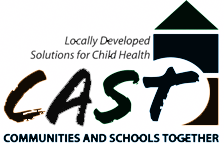GIS is a powerful tool in understanding spatial patterns, both for analysis of past or current phenomena or in planning for the future. GIS can also be used in a participatory way where the process of data collection can be a powerful tool in community empowerment and change, in addition to the use of the data for analysis purposes. Collecting localized, mobile-based data has never been easier with the near ubiquity of smart phones. Here are a few foundational projects that were carried out prior to the extensive availability of mobile phones.
| Built Environment Audits with Mobile GIS: This site gives an overview of complete streets and safe routes to school audit instruments designed for ArcPad GIS and the iPhone. These are field-based, spatially referenced approaches to walking, biking, and transit assessments at a very localized scale and have been tested in communities across the United States. (Related information can be seen in published articles and classes taught per the links to the left.) | |
 |
Communities and Schools Together (CAST):CAST is a five-year project that seeks to improve child health in the Bethel School District. The project includes seven elementary schools with an enrollment of nearly 3,000 students. CAST is a unique community-based participatory program in that it brings together schools, local organizations, and families to assess and respond to children’s health and nutrition needs at both a school and community level.
Members of the Parent Advisory Council and volunteers from Bethel schools are using the Complete Streets Assessment Tool (mobile GIS)s to assess whether streets in Bethel include: sidewalks, bike lanes, special bus lanes, comfortable and accessible transit stops, frequent crossing opportunities, median islands, accessible pedestrian signals, curb extensions, or other features that support walking, biking, and public transit. Interim Evaluation Map of Streets and Intersections superimposed on Google Earth |
 |
Citizen Participation with Mobile GIS: These were University-Community partnerships that combined the student and faculty resources of an applied GIS course with the local expertise of neighborhood citizens in mapping local community conditions. In addition to teaching students new GIS skills, these service learning and action research projects were intended to help develop social networks, organize the community, and provide a spatial overview of a local community to its members. |